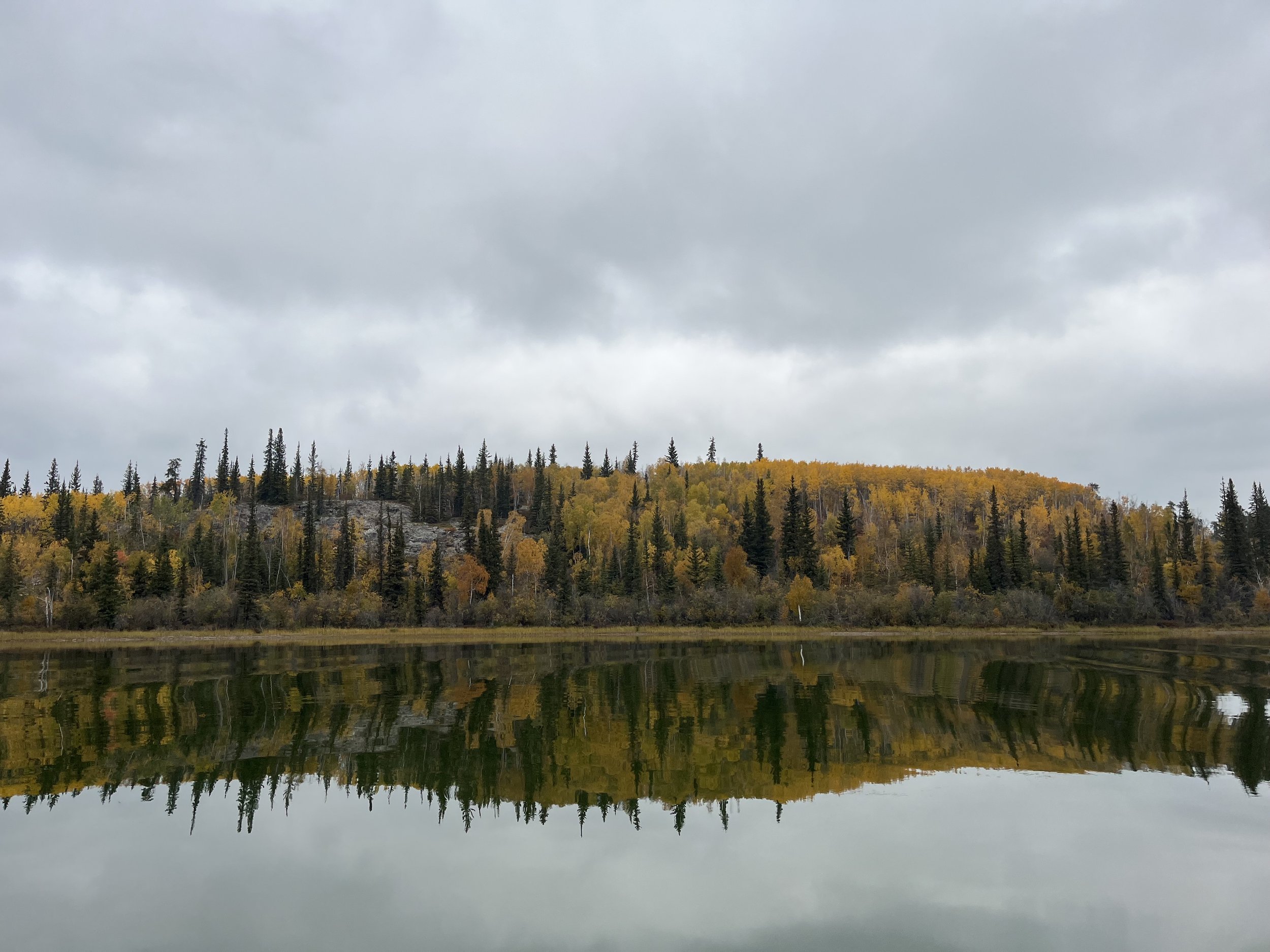
Building on success
NWT: Our Land for the Future builds on the Northwest Territories’ reputation as a world leader in Indigenous-led conservation and collaborative governance structures.
There aren’t many places left on the planet that offer this opportunity to build on existing momentum, support Indigenous-led objectives, and achieve globally significant conservation and economic development outcomes.
It’s not just about the future of the NWT and empowering our communities, it’s about playing our part in addressing the challenges of climate change and loss of biodiversity for the world.
The NWT harbors one of the world’s largest, most intact and productive forest landscapes. It is home to two of the world’s largest and purest freshwater lakes and the eighth largest river on Earth.
These lands and waters support an abundance of animals, including migratory birds and arctic mammals, including caribou, grizzly bears, polar bears, wolves, lynx and wolverine.
The Northwest Territories is also an irreplaceable vault for natural carbon that we must safeguard if we hope to halt the climate crisis.
Vast tracts of permafrost, soils, wetlands, and peatlands in the Northwest Territories contain an estimated 44 billion metric tons of carbon—an amount equivalent to about 5.5 years’ worth of global carbon emissions from the burning of fossil fuels.
“Being on the land and land stewardship brings people back to themselves, it heals, it protects, it provides. The land is healing, and it is where we all belong.”
— Kristen Tanche, Regional Health & Wellness Director, Dehcho First Nations
The NWT’s healthy lands and waters have sustained Indigenous communities, languages, and knowledge systems for millennia. That is why Indigenous Peoples are engaged in taking care of land and water.
This protects who we are as Indigenous Peoples now and into the future. And it ensures that we have a healthy, thriving landscape because we need a healthy, thriving landscape to be strong in our cultures.
Today, the relationship with the land has inspired several Indigenous Governments to establish Indigenous Protected and Conserved Areas (IPCA). In fact, all modern established Protected Areas in the NWT have been Indigenous led.
The Guardian stewardship programs in these IPCAs—and in other NWT regions—provide jobs in local communities.
They offer leadership training, language and culture learning, healing from trauma, and a sense of pride to young people. Having Guardians on the land transforms lives, families, and communities.
The NWT has already shown that investing in Indigenous-led conservation is good for the land, good for people, and good for the economy.
Thaıdene Nëné Indigenous Protected Area is 26,376 square kilometres in size. Thaıdene Nëné was established using Łutsël K’é Dene law, the Thaıdene Nëné Agreements, the Canada National Parks Act, and the Northwest Territories Protected Areas Act and Wildlife Act.
The Indigenous Protected Area designated by Łutsël K’é Dene First Nation encompasses all of Thaıdene Nëné, within which are a National Park Reserve, a Territorial Protected Area, and a territorial Wildlife Conservation Area.
Making decisions about and taking care of Thaıdene Nëné is the shared responsibility of the Łutsël K’é Dene First Nation, Northwest Territory Métis Nation, Parks Canada, and the Government of the Northwest Territories. Deninu Kųę́ First Nation and Yellowknives Dene First Nation also play a key role in providing guidance for stewardship of Thaıdene Nëné.
Edéhzhíe’s lands, water and wildlife are integral to the Dehcho Dene culture, language, and way of life. It is also the first Dene Indigenous Protected Area within Canada.
In 2018, the Dehcho passed a Dene law to create the Edéhzhíe Protected Area in July 2018, then in October of that year, Dehcho leaders signed an agreement with the Government of Canada to designate it as a joint Dehcho Protected Area and National Wildlife Area.
Now more than 14,200 sq km will be protected for future generations. The Dehcho and the GNWT also reached agreement on a permanent land withdrawal for the protection of the subsurface of the area in 2020. These lands and waters are cared for by the Dehcho K'éhodi Guardians Programs.
The K’asho Got’ıne led the process of establishing Ts'udé Nilįné Tuyeta as an Indigenous Protected and Conservated Area and Territorial Protected Area, culminating in its establishment in 2019.
Spanning 10,060 sq km, the area includes wetlands that filter millions of litres of water a day and provide nesting grounds for ducks, geese, and loons. Mountain and woodland caribou—both central to K’asho Got’ine culture—are also found in the IPCA along with other species at risk.
Investment from Tuyeta has supported language immersion, harvesting camps that feed communities, and certification programs. These opportunities support employment not only in the communities, but also with the GNWT, the Canadian Wildlife Service, the K’ahsho Got’ine Foundation, and others. Most importantly, these programs provide experience on the land so more families can deepen their ancestral connection to their territory.







